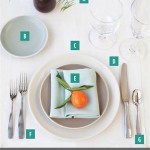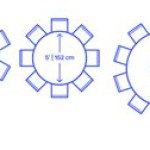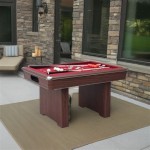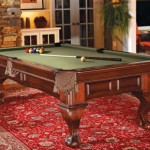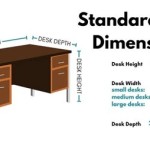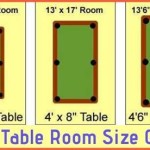The Versatile Patio Table Lazy Susan: A Comprehensive Guide
The patio table lazy susan, a rotating tray placed at the center of a table, offers a convenient and elegant solution for sharing food and beverages during outdoor gatherings. Its functionality extends beyond simple convenience, impacting the overall dining experience and aesthetics of the patio setting. Understanding the different materials, sizes, styles, and features available is crucial for selecting the perfect lazy susan to complement a specific patio table and enhance outdoor entertaining.
This guide explores the various facets of the patio table lazy susan, providing comprehensive information to assist in making an informed purchasing decision. It delves into the advantages of using a lazy susan, examines the diverse range of materials employed in their construction, discusses size and style considerations, and highlights key features that contribute to their overall functionality and durability. This analysis aims to provide a thorough understanding of the patio table lazy susan, enabling readers to select the optimal model for their specific needs and preferences.
Key Point 1: Advantages of Using a Patio Table Lazy Susan
The primary benefit of deploying a patio table lazy susan lies in its enhanced accessibility. Guests seated around the table can easily access condiments, appetizers, or side dishes without reaching across the table or requesting items to be passed. This promotes a more relaxed and comfortable dining experience, fostering conversation and interaction among attendees. This is particularly beneficial when dealing with larger patio tables where reaching across the table becomes impractical or creates a disruptive flow.
Furthermore, a lazy susan helps to maintain a more organized table setting. By consolidating shared items in a central location, it reduces clutter and prevents individual dishes from taking up excessive space. This contributes to a cleaner and more aesthetically pleasing table arrangement. It also simplifies the process of clearing the table after the meal, as all shared items are already grouped together.
The integration of a lazy susan also minimizes the risk of spills and accidents. Passing dishes around the table increases the probability of accidental bumps and spills. A lazy susan allows guests to rotate the desired item towards themselves, eliminating the need for reaching and reducing the potential for mishaps. This is especially valuable when serving young children or individuals with mobility limitations.
Finally, a well-chosen lazy susan can enhance the overall aesthetic appeal of the patio table. Available in a variety of materials, finishes, and styles, it can complement the existing table design and add a touch of sophistication to the outdoor dining area. It can serve as a decorative centerpiece, drawing attention to the table and creating a more inviting atmosphere. When selecting a lazy susan, it is important to consider its compatibility with the existing patio furniture and the overall design theme of the outdoor space.
Key Point 2: Materials Commonly Used in Patio Table Lazy Susan Construction
The selection of materials significantly impacts the durability, aesthetics, and maintenance requirements of a patio table lazy susan. Several materials are commonly used, each offering distinct advantages and disadvantages.
Wood is a popular choice due to its natural beauty and ability to blend seamlessly with various patio designs. Teak, cedar, and acacia are frequently employed due to their inherent resistance to moisture and decay. However, wood lazy susans typically require regular sealing or staining to maintain their appearance and protect them from the elements. Exposure to prolonged sunlight and rain can lead to warping, cracking, or fading if not properly maintained. Wood also offers a classic, traditional appearance that many homeowners prefer.
Glass lazy susans offer a sleek and contemporary aesthetic. They are easy to clean and resistant to stains and scratches. Tempered glass is the preferred choice due to its increased strength and safety. If shattered, it breaks into small, relatively harmless pieces rather than sharp shards. However, glass can be susceptible to chipping or cracking if subjected to significant impact. Glass also tends to reflect sunlight, which can sometimes be distracting, and can become quite hot in direct sunlight.
Metal lazy susans, often constructed from aluminum or stainless steel, are known for their durability and resistance to rust and corrosion. Aluminum is lightweight and easy to maneuver, while stainless steel offers superior strength and longevity. Metal lazy susans are typically low-maintenance and can withstand harsh weather conditions. However, they can become hot in direct sunlight and may not offer the same aesthetic warmth as wood or glass. The modern, industrial look of metal is often favored in contemporary patio designs.
Plastic or resin lazy susans are an economical and lightweight option. They are resistant to moisture, stains, and fading, making them ideal for outdoor use. However, they may not be as durable as wood, glass, or metal and can be susceptible to scratching or cracking. Plastic lazy susans also tend to have a less sophisticated appearance compared to other materials. The ease of cleaning and affordability makes them a practical choice for casual outdoor dining.
Stone lazy susans, often made of granite or marble, offer a luxurious and elegant aesthetic. They are exceptionally durable and resistant to scratches and heat. However, stone lazy susans are heavier and more expensive than other options. They also require periodic sealing to prevent staining. The natural beauty of the stone and its inherent weight contribute to a sense of permanence and quality.
Key Point 3: Size, Style, and Features to Consider
Selecting the appropriate size of a patio table lazy susan is crucial for ensuring its functionality and aesthetic harmony with the table. The diameter of the lazy susan should be proportionate to the size and shape of the table. A general guideline is to choose a lazy susan that is approximately one-half to two-thirds the diameter of the table. This allows ample space for guests to reach the items on the lazy susan without obstructing access to the rest of the table. For rectangular tables, the length of the lazy susan should be considered in relation to the shorter side of the table.
The style of the lazy susan should complement the overall design of the patio furniture and the outdoor space. Traditional patios may benefit from a wooden lazy susan with a classic design, while modern patios may be better suited to a sleek metal or glass model. Consider the color and finish of the lazy susan in relation to the other elements of the patio, such as the table, chairs, and umbrella. The style should contribute to a cohesive and visually appealing outdoor environment.
Several key features contribute to the functionality and durability of a patio table lazy susan. The smoothness of the rotation mechanism is paramount. A high-quality lazy susan should rotate effortlessly and silently, allowing for easy access to items without causing disturbance. Ball bearing mechanisms are generally considered superior for their smooth and reliable performance. The mechanism should also be durable and resistant to corrosion, especially when exposed to outdoor elements.
The edge design of the lazy susan is another important consideration. A raised edge can help to prevent items from sliding off the tray, especially when the table is slightly uneven. A smooth, rounded edge can enhance the aesthetic appeal and prevent accidental bumps or scratches. The edge should be sturdy and resistant to chipping or cracking.
Some lazy susans feature integrated compartments or sections for organizing different items. These compartments can be particularly useful for serving condiments, dips, or appetizers. They help to keep the table organized and prevent items from mixing together. When selecting a lazy susan with compartments, consider the size and shape of the compartments in relation to the types of items that will be served. Deep compartments can accommodate larger items, while shallow compartments are suitable for smaller portions. The material of the compartments should also be durable and easy to clean.
Finally, consider the ease of cleaning and maintenance when selecting a patio table lazy susan. Some materials, such as glass and metal, are easier to clean than others. Wood lazy susans may require periodic sealing or staining to maintain their appearance. Look for materials that are resistant to stains, scratches, and fading. A detachable design can also facilitate cleaning, allowing the lazy susan to be easily disassembled and washed. Proper care and maintenance will prolong the lifespan of the lazy susan and ensure its continued functionality and aesthetic appeal.

Boca Outdoor Lazy Susan

Lazy Susan W Umbrella Hole Outdoor Patio Accessories Tropitone

Eucalyptus Lazy Susan Large Round Dining Table Outdoor Patio

The Lazy Susan Outdoor Table Set Hammacher Schlemmer

Large Round Eucalyptus Wood 63 Lazy Susan Dining Table Outdoor Set

Round Outdoor Dining Table With Lazy Susan Folk Interiors

100 Round Patio Table With Lazy Susan Cool Furniture Ideas Check More At Http Livelylighting Co Outdoor Dining Setting

Outdoor Lazy Susan For Fire Pit Or Patio Table Furniture Bar S

Ornate Traditional 59 In Round Aluminum Outdoor Dining Table Mesh Lattice Broe With Lazy Susan Hd2555 Bz The Home Depot

Boca Outdoor Lazy Susan
Related Posts


